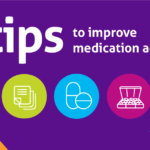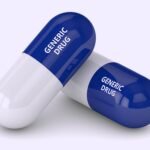Future of Medication :
In the realm of healthcare, medication delivery stands as a critical component in ensuring patients receive timely and effective treatment. Traditionally, medications have been administered through bottles, pills, and syringes, but the landscape is evolving rapidly with groundbreaking innovations. In this article, we explore the cutting-edge advancements that are reshaping the future of medication delivery.

Nanotechnology Revolutionizing Drug Delivery
Nanotechnology has emerged as a game-changer in medication delivery, offering precise targeting and enhanced efficacy. Nano-sized particles can encapsulate drugs, allowing them to penetrate specific cells or tissues with unparalleled accuracy. This targeted approach not only minimizes side effects but also maximizes therapeutic benefits.
Smart Drug Delivery Systems
The integration of smart technology into drug delivery systems has opened new avenues for personalized medicine. Smart devices, such as implantable pumps and wearable patches, can monitor patient parameters in real-time and adjust drug dosages accordingly. By optimizing drug delivery based on individual needs, these systems optimize treatment outcomes and improve patient adherence.
3D Printing in Pharmaceutical Manufacturing
The advent of 3D printing has revolutionized various industries, including pharmaceuticals. This technology enables the precise fabrication of customized dosage forms, tailored to meet specific patient requirements. From complex geometries to sustained-release formulations, 3D printing offers unprecedented flexibility in medication design, paving the way for personalized therapies.
Biodegradable Implants for Prolonged Drug Release
Biodegradable implants represent a breakthrough in sustained drug delivery, offering prolonged release over extended periods. These implants, composed of biocompatible materials, gradually degrade within the body, releasing the encapsulated drug in a controlled manner. By circumventing the need for frequent dosing, biodegradable implants enhance patient convenience and compliance.
Microchip Technology for Controlled Drug Release
Microchip technology has emerged as a promising platform for controlled drug release, enabling precise modulation of dosage regimens. These microelectronic devices, implanted beneath the skin, can be programmed to release Future of medications at predetermined intervals. By maintaining optimal drug concentrations in the bloodstream, microchip implants ensure therapeutic efficacy while minimizing fluctuations.
Inhalable Drug Delivery Systems
Inhalable drug delivery systems offer a non-invasive and efficient means of administering Future of medications, particularly for respiratory conditions. Dry powder inhalers and nebulizers deliver drugs directly to the lungs, where they can exert their therapeutic effects rapidly. With advancements in particle engineering and formulation, inhalable systems are becoming increasingly precise and reliable.
Telemedicine and Remote Medication Management
The rise of telemedicine has transformed the landscape of medication delivery, allowing patients to access healthcare services remotely. Through virtual consultations and remote monitoring, healthcare providers can prescribe medications and adjust dosages without the need for in-person visits. This not only enhances convenience for patients but also improves medication adherence and management.
“Beyond the Bottle: Innovations Shaping the Future of Medication Delivery” is a compelling topic that highlights the evolving landscape of how medications are administered to patients. In this era of rapid technological advancement and increasing patient needs, several innovative approaches are reshaping the traditional methods and future of medication delivery.
One significant trend is the rise of personalized medicine and targeted drug delivery systems. With advancements in genomics and biotechnology, medications can now be tailored to individual patients based on their genetic makeup, lifestyle factors, and specific medical conditions. This personalized approach not only enhances the efficacy of treatment but also minimizes adverse effects by delivering the right dose and future of medication to the right place at the right time.
Another key innovation is the development of wearable drug delivery devices. These compact, portable devices enable patients to receive continuous or on-demand medication doses without the need for frequent injections or visits to healthcare facilities. From smart patches and implantable devices to wearable pumps and inhalers, these technologies offer convenience, discretion, and improved adherence to treatment regimens.
Moreover, the integration of digital health technologies is revolutionizing medication delivery and management. Mobile apps, connected devices, and smart packaging solutions enable patients to monitor their medication intake, receive dosage reminders, and access real-time health data. These digital tools empower patients to take control of their health and facilitate seamless communication between patients, caregivers, and healthcare providers.
Furthermore, advancements in nanotechnology and biocompatible materials are driving the development of novel drug delivery platforms. Nanostructured carriers, such as liposomes, nanoparticles, and micelles, can encapsulate drugs, protect them from degradation, and target specific tissues or cells within the body. These nanocarriers offer enhanced bioavailability, prolonged drug release, and reduced systemic toxicity, leading to improved therapeutic outcomes and patient comfort.
Frequently Asked Questions (FAQ) about Medication Delivery Innovations
- What are medication delivery innovations? Medication delivery innovations refer to advancements in the methods and technologies used to administer medications to patients. These innovations aim to improve the efficacy, safety, and convenience of drug delivery while enhancing patient adherence to treatment regimens.
- What are some examples and future of medication delivery innovations? Examples and future of medication delivery innovations include personalized medicine and targeted drug delivery systems, wearable drug delivery devices, digital health technologies for medication management, and novel drug delivery platforms based on nanotechnology and biocompatible materials.
- How do personalized medicine and targeted drug delivery systems work? Personalized medicine involves tailoring medications to individual patients based on their genetic makeup, medical history, and other factors. Targeted drug delivery systems deliver medications directly to specific tissues or cells within the body, minimizing systemic exposure and reducing adverse effects.
- What are wearable drug delivery devices? Wearable drug delivery devices are compact, portable devices that enable patients to receive medications continuously or on-demand. These devices include smart patches, implantable devices, wearable pumps, and inhalers, offering convenience, discretion, and improved treatment adherence.
- How do digital health technologies facilitate medication management? Digital health technologies, such as mobile apps, connected devices, and smart packaging solutions, help patients monitor their medication intake, receive dosage reminders, and access real-time health data. These tools enhance communication between patients, caregivers, and healthcare providers, improving medication adherence and treatment outcomes.
- What are nanotechnology-based drug delivery platforms? Nanotechnology-based drug delivery platforms utilize nanostructured carriers, such as liposomes, nanoparticles, and micelles, to encapsulate and deliver drugs to specific sites within the body. These platforms offer advantages such as enhanced bioavailability, prolonged drug release, and reduced systemic toxicity.
- How do medication delivery innovations benefit patients? Medication delivery innovations benefit patients by improving treatment efficacy, safety, and convenience. These innovations optimize drug delivery, enhance patient adherence to treatment regimens, minimize adverse effects, and empower patients to take control of their health.
- Are medication delivery innovations widely available? While some medication delivery innovations are already in use, others are still in the research and development stage. The availability of these innovations may vary depending on factors such as regulatory approval, technological readiness, and healthcare infrastructure.
- How can healthcare providers stay updated on medication delivery innovations? Healthcare providers can stay updated on medication delivery innovations by attending conferences, workshops, and seminars, reading scientific journals and publications, collaborating with researchers and industry partners, and actively participating in professional networks and associations focused on drug delivery and pharmaceutical technology.
- Where can I learn more about medication delivery innovations? You can learn more about medication delivery innovations by consulting healthcare professionals, visiting reputable medical websites and online resources, and exploring academic publications and research articles related to drug delivery, pharmacology, and pharmaceutical sciences.

